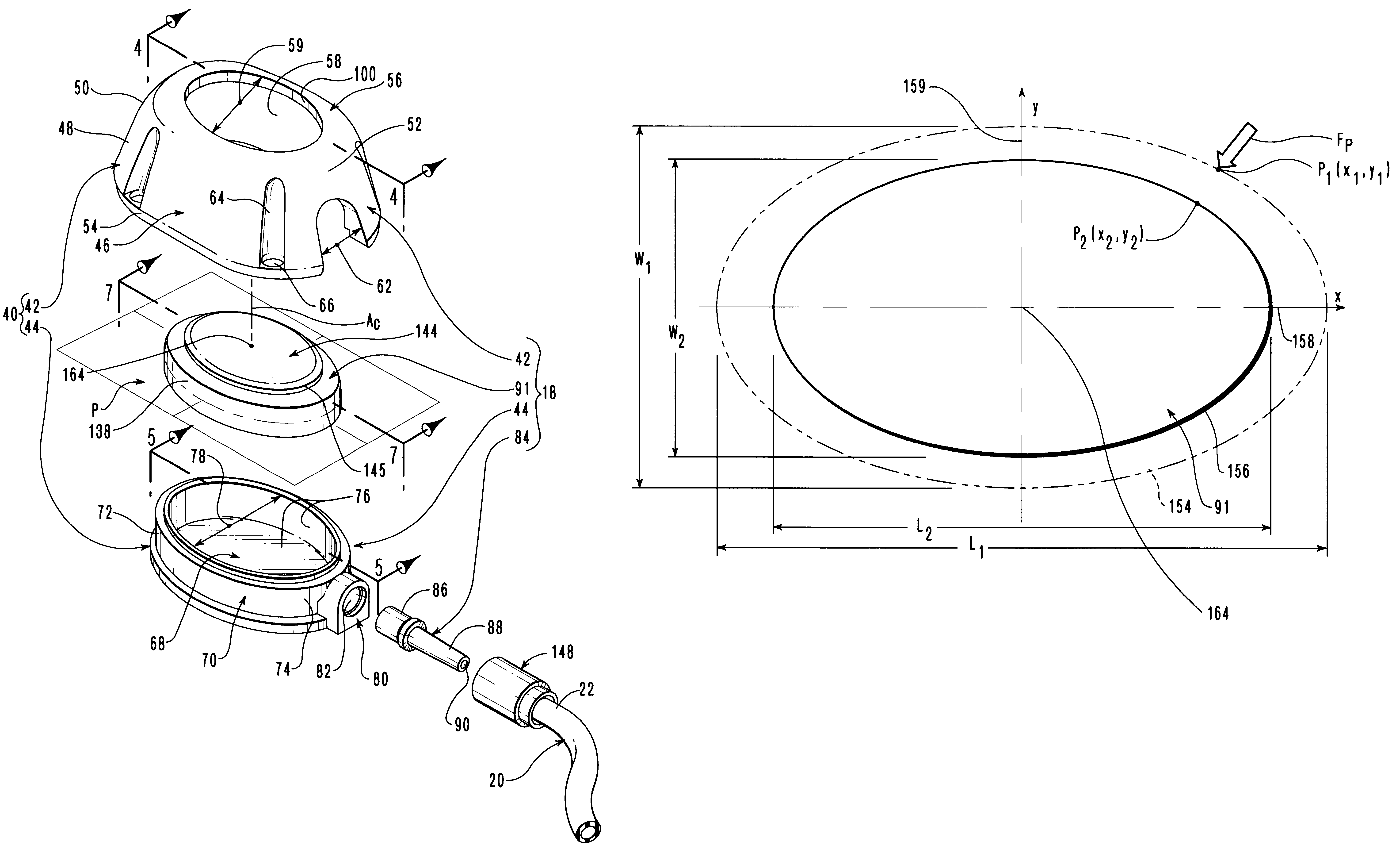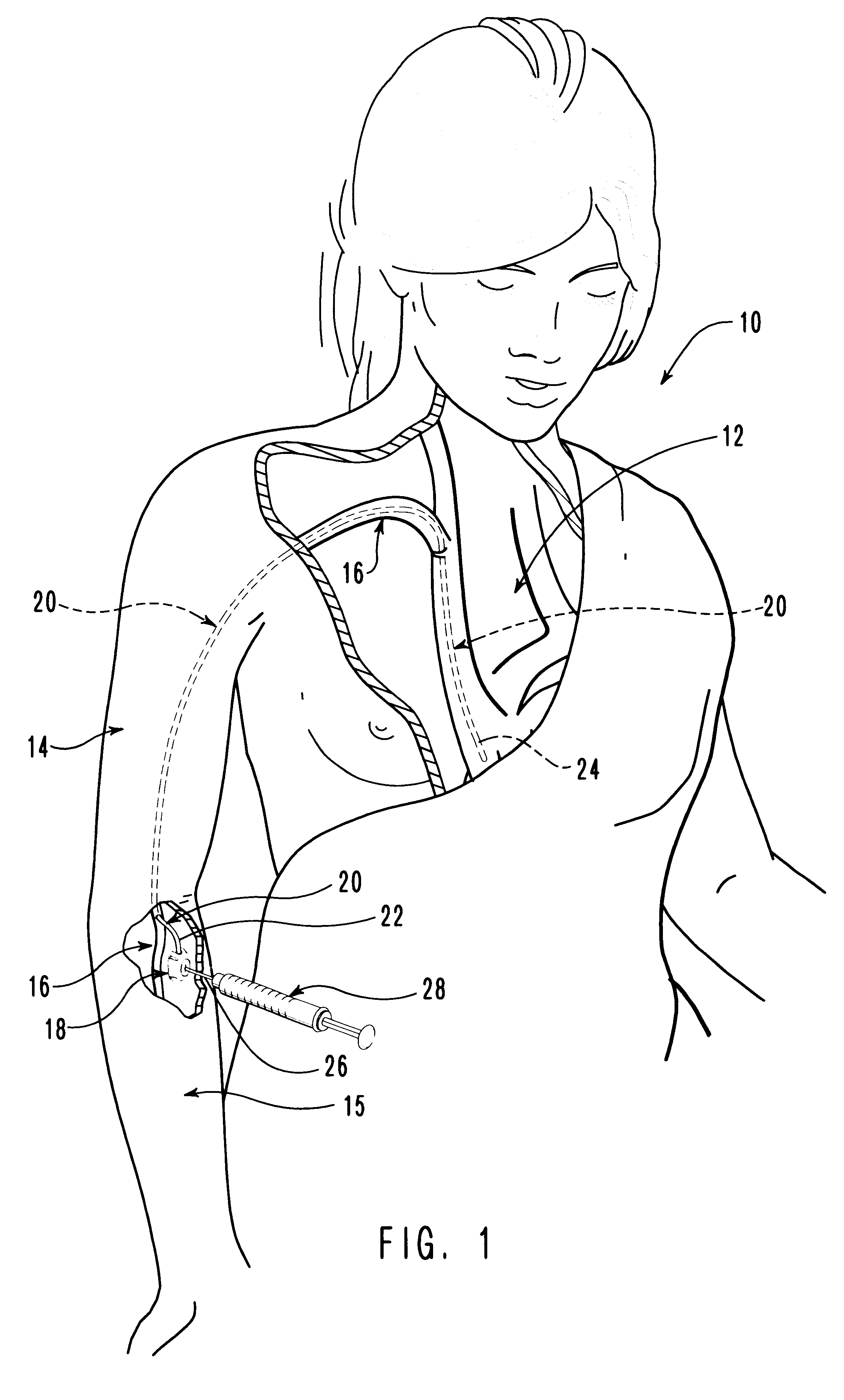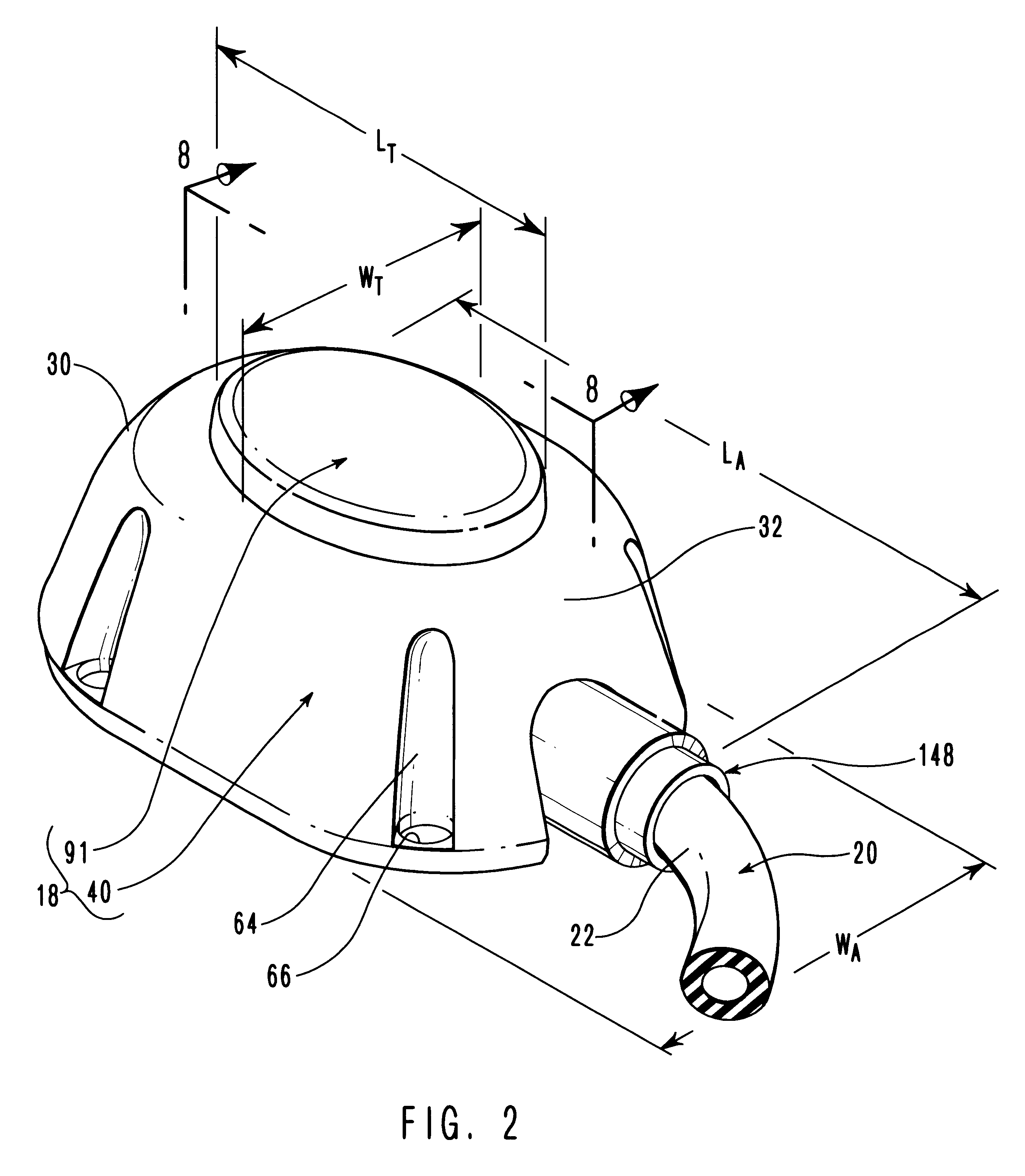Vascular access port with elongated septum
a septum and vascular access technology, applied in the field of vascular access systems, can solve the problems of insufficient penetration force of the needle for a given septum, pain for patients, and necrosis of the tissue surrounding the implantation pocket,
- Summary
- Abstract
- Description
- Claims
- Application Information
AI Technical Summary
Benefits of technology
Problems solved by technology
Method used
Image
Examples
Embodiment Construction
In FIG. 1, a patient 10 is shown having a chest 12, a right arm 14, and a forearm 15 associated therewith. A vein 16 extends from forearm 15 through arm 14 and into chest 12.
Subcutaneously implanted in forearm 15 of patient 10 is one embodiment of a vascular access port 18 incorporating teachings of the present invention. Also implanted with vascular access port 18 is an elongated, pliable vascular catheter 20 that is coupled at the proximal end 22 thereof to vascular access port 18. Catheter 20 enters vein 16 in the proximity of vascular access port 18 and extends within vein 16 from forearm 15, through arm 14, and into chest 12 of patient 10. The distal end 24 of catheter 20 has been advanced through vein 16 to a desired location within chest 12 of patient 10 near the heart thereof. Distal end 24 of catheter 20 is either open, or is provided with such pressure-sensitive valving as affords for S one-way or two-way fluid flow therethrough according to the intended use of vascular ac...
PUM
 Login to View More
Login to View More Abstract
Description
Claims
Application Information
 Login to View More
Login to View More - R&D
- Intellectual Property
- Life Sciences
- Materials
- Tech Scout
- Unparalleled Data Quality
- Higher Quality Content
- 60% Fewer Hallucinations
Browse by: Latest US Patents, China's latest patents, Technical Efficacy Thesaurus, Application Domain, Technology Topic, Popular Technical Reports.
© 2025 PatSnap. All rights reserved.Legal|Privacy policy|Modern Slavery Act Transparency Statement|Sitemap|About US| Contact US: help@patsnap.com



